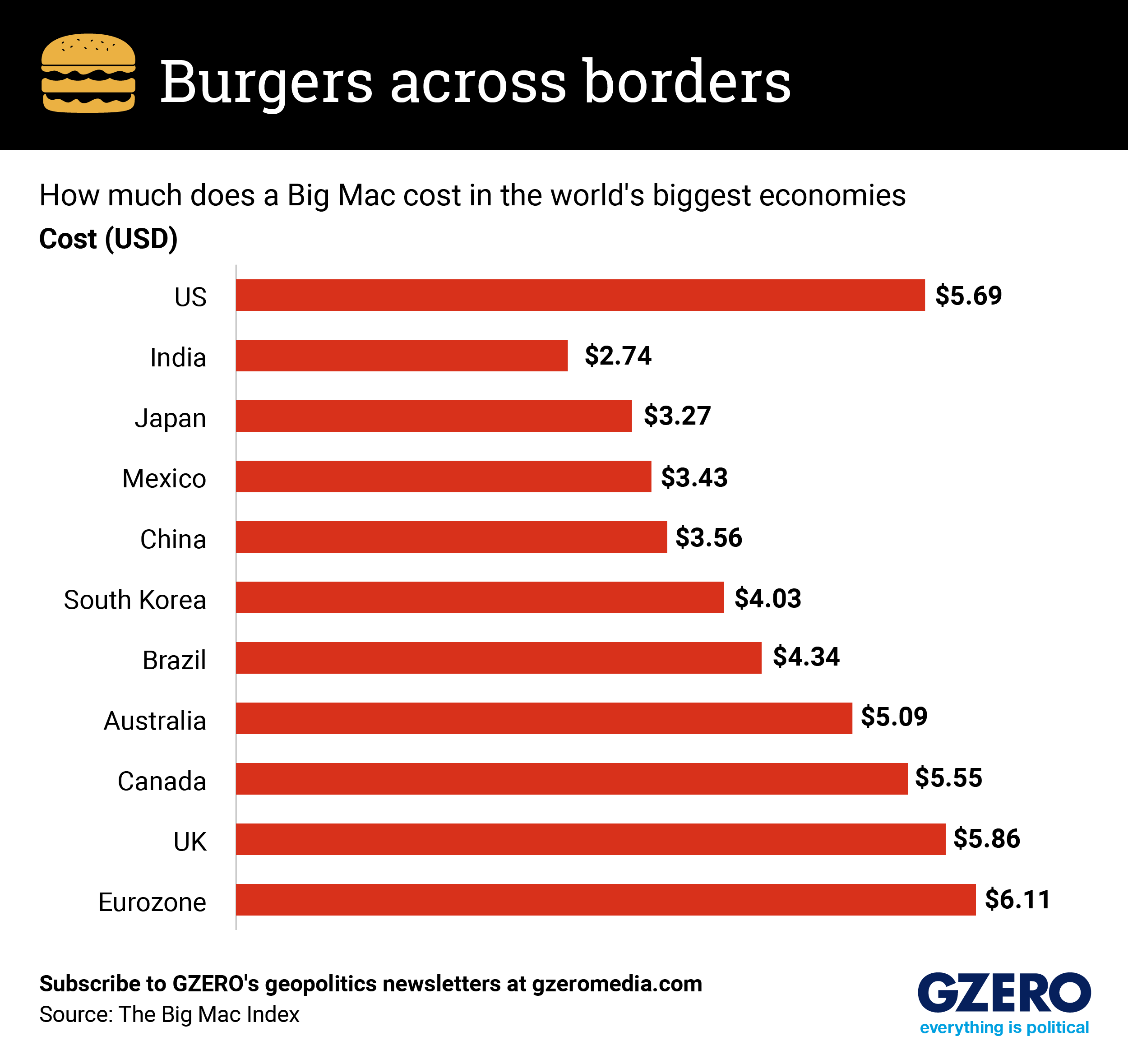October 07, 2024
So you’ve heard of Bidenomics, but what about burgernomics? Allow us to introduce you to the Big Mac Index, which uses the price of a McDonald's Big Mac to assess whether currencies are over- or undervalued relative to the US dollar.
The index shows purchasing (patty) power, or the gap between productivity and living standards, between countries. It compares the local price of a Big Mac in different countries, converted to US dollars. But it's also a good measure of inflation – a hot topic for the US election, with Kamala Harris and Donald Trump both arguing that they have been better stewards of the economy. Of course, both administrations were majorly affected by COVID, which also had an impact on Big Mac prices.
Before the pandemic, you could buy a Big Mac for $4.82 – or a crisp $5 bill with change to spare, but today, you pay $5.69. This might seem like a win for Trump, but in terms of wages, the story is more complicated. In 2020, an average worker could afford about five Big Macs with an hour’s pay, but now, one hour of work could buy you 5.4 Big Macs. This reflects how, since March 2023, wage growth has outpaced inflation, with the average American’s hourly pay increasing by 5.9%, while prices have jumped just 4.1%.
More For You
- YouTube
It's one of the few sources Americans across the political spectrum still rely on.
Most Popular
Think you know what's going on around the world? Here's your chance to prove it.
America’s new National Security Strategy confirms what Europeans have feared for months: Washington now sees a strong, unified European Union as a problem to be solved, not an ally to be supported.
Sports inspire greatness, determination, and resilience — both on and off the field. Bank of America is proud to celebrate the achievements of and uplift communities through the power of sports. Learn more about how Bank of America supports athletes in life and in the game.
© 2025 GZERO Media. All Rights Reserved | A Eurasia Group media company.
